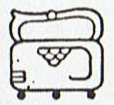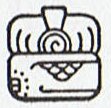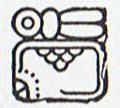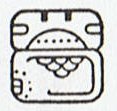|
TRANSLATIONS
The rectangular outline from which the tree is growing could be equivalent to the henua glyph type. The fertile field is the female horizontal part in the cycle of life, while the tree is the vertical male part.
The Milky Way does not look to be stable but is seemingly moving, turning and bending, as if it was alive.
The head gear of the sun god is not in proper order at midsummer and neither at the end of summer. This is because his head is lost at those times, maybe figuratively at the first occasion. At midsummer his head is the head of the crocodile, and it must come off to put a stop to the threatening 'great eater'.
At the end of summer his head is buried in the ground and the daylight becomes feeble.
|
5.
Metoro as a rule said
kiore -
henua at this glyph combination. All over the world
sun was imagined as a 'climber' - as a small furry red mammal,
mostly a cat. Personally I prefer the red panda:
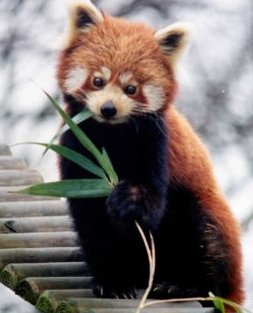
"Its Western name is
taken from a Himalayan language, possibly Nepali, but its
meaning is now being worked on. One theory is that 'panda' is an
anglicisation of poonya, which means 'eater of bamboo' ..."
(Internet. Wikipedia)
But there was only one species of mammal on Easter Island, viz. the rat (kiore).
'Black rat' (kiore uri) was the name for one of
the kuhane stations (Te Kioe Uri), a fact which indicates sun
was nicknamed kiore; the end of the 4th quarter is the
darkest time of the year:
|
1st quarter |
2nd quarter |
3rd quarter |
4th quarter |
|
He Anakena
(July) |
Tagaroa uri
(October) |
Tua haro
(January) |
Vaitu nui
(April) |
|
Te Pei |
Te Pou |
Tama |
One Tea |
Mahatua |
Taharoa |
Nga Kope Ririva |
Te Pu Mahore |
|
Hora iti
(August) |
Ko Ruti
(November) |
Tehetu'upķ
(February) |
Vaitu potu
(May) |
|
Hua Reva |
Akahanga |
Hanga Takaure |
Poike |
Hanga Hoonu |
Rangi Meamea |
Te Poko Uri |
Te Manavai |
|
Hora nui
(September) |
Ko Korů
(December) |
Tarahao
(March) |
He Maro
(June) |
|
Hatinga Te Kohe |
Roto Iri Are |
Pua Katiki |
Maunga Teatea |
Peke Tau O Hiti |
Mauga Hau Epa |
Te Kioe Uri |
Te Piringa Aniva |
The rat was sometimes pronounced kiore, sometimes kio'e
(which latter often became simply kioe).
It is no coincidence that Te Kioe Uri was the 5th
station of the kuhane, because 5 is a symbol for 'fire' (another
nickname for the sun).
|
Counting 12 half-months (kuhane
stations) beyond Te Kioe Uri we arrive at Pua Katiki, the 'halo'
(katiki) 'flower' (pua, ginger) of the 'rat':
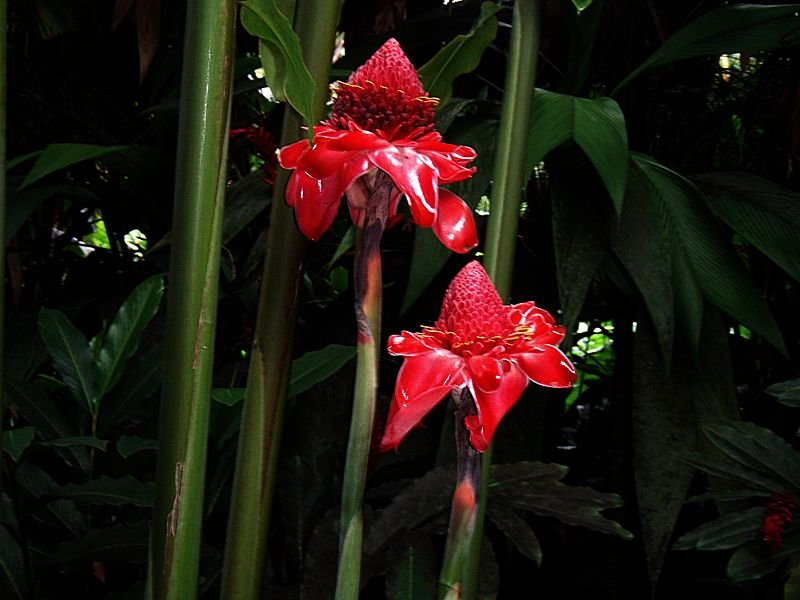
|
6. As to
Metoro's choice of the word henua instead of talking
about the 'tree' there are several different alternatives. Most simple is
just to accept his statement, implying that
the
rat is standing on the earth (the sun animal is not
climbing the 'tree').
This is not so ridiculous as it first appears to be. To explain why
is, though, no easy task. The best way may be to begin by referring
to Manuscript E:
|
... The
canoe continued its exploration and in a sweep sailed on
to Hanga Te Pau. They went ashore and took the
food with them. They pulled the canoe onto the beach and
left it there. Ira sat down with all the other
(companions) and spoke to Makoi: 'You shall mark
the land for me and make it known (by its names)!' After
that, Ira spoke these words: 'This is the digging
stick (? ko koko), Kuukuu. You shall work
the land for me and plant the yam roots!'
Makoi
named the place Hanga Te Pau, 'the landing site
of Ira'. So that they would remember (? he
aringa, literally, 'as face'), the open side of
Hanga Te Pau was given this name. Ira got up.
They all climbed to the top of the hill. They climbed up
on the tenth day of the month of June ('Maro').
They reached the side crater (te manavai) and
looked around carefully. Makoi said, 'This is the
Manavai of Hau Maka'.
They
climbed farther and reached the top. They saw the dark
abyss and the large hole (of the crater Rano Kau).
They all said, 'Here it is, young men, the dark abyss of
Hau Maka.' They made camp and constructed a
house. Kuukuu got up, worked the ground, and
heaped up the earth for the yam roots ... |
I suggest Kuukuu, the planter, is a playful name for the
spring sun. It is he who is doing the important work, watering
the plants with his rain and warming them with his rays. Kuukuu is the
'rat'. His rays are 'standing' on the earth.
In this view henua must be imagined as horizontal, not
vertical:

|
The combination kiore - henua may depict the 'rat' standing on horizontal earth, while henua alone would be vertical. The combination possibly appears only during the 1st half year, but the simple sign also elsewhere.
|
7. Another
clue is given by the kuhane
breaking the kohe
plant (Hatinga Te Kohe).
"Several Asian cultures,
including that of the Andaman Islands, believe that humanity emerged
from a bamboo stem. In the Philippine creation myth, legend tells
that the first man and the first woman were split open from a bamboo
stem that emerged on an island created after the battle of the
elemental forces (Sky and Ocean).
In Malaysian legends a
similar story includes a man who dreams of a beautiful woman while
sleeping under a bamboo plant; he wakes up and breaks the bamboo
stem, discovering the woman inside.
The Japanese folktale
'Tale of the Bamboo Cutter' (Taketori Monogatari) tells of a
princess from the Moon emerging from a shining bamboo section.
Hawaiian bamboo ('ohe)
is a kinolau or body form of the Polynesian creator god
Kane.
An ancient Vietnamese
legend tells of a poor, young farmer who fell in love with his
landlord's beautiful daughter. The farmer asked the landlord for his
daughter's hand in marriage, but the proud landlord would not allow
her to be bound in marriage to a poor farmer. The landlord decided
to foil the marriage with an impossible deal; the farmer must bring
him a 'bamboo tree of one-hundred sections'. The benevolent god
Bụt appeared to the farmer and told him that such a tree could
be made from one-hundred sections from several different trees.
Bụt gave the him four magic words to attach the many sections of
bamboo: 'Khắc nhập, khắc xuất', which means
'put in
immediately, take out immediately'. The triumphant farmer returned
to the landlord and demanded his daughter. The story ends with the
happy marriage of the farmer and the landlord's daughter."
(Internet. Wikipedia)
The theme is the miracle of the fruitfulness of woman (mother
earth). The 4 magic words 'put in immediately, take out immediately'
can be understood if perceived from that direction.
To release the 'beautiful woman' is an act to be compared with
Kuukuu working with his digging stick.
The bamboo (kohe) sections put together bit by bit explains
the periods (sections) during which sun gradually rises higher and
higher.
|
But why should it be the kuhane (a female) who 'breaks the bambo'? Maybe the answer is to find in the structure of the kuhane stations. Counting 6 beyond Te Kioe Uri we arrive at Hatinga Te Kohe. Another 6 steps leads to Pua Katiki, and there can be a story embedded in this.
If so, then the story ought to have also Peke Tau O Hiti included, yet another 6 steps ahead. The story ought to begin by the female discarding the old one, and then when the new one has grown enough he is welcome.
But the other half of the story has nothing to do with 'he nua' (the old woman). During the winter half of the year earth lies fallow. The 'black rat' (the king) can rule undisturbed by earthly matters, even when he is old and feeble and his successor (peke) has been appointed.
| Peke 1. To bite (of fish or lobster pecking at fishhook). 2. To repeat an action: he-peke te rua; ina eků peke-hakaou te rua don't you do it a second time; ina eků peke hakaou-mai te rua ara, don't come back here again. Vanaga.
To succeed, to follow. Churchill. |
|
